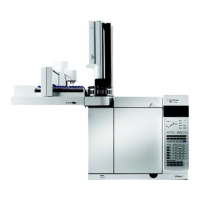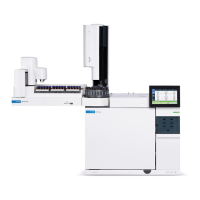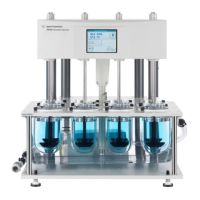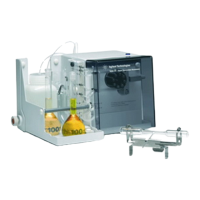134 Agilent 7890 Series Troubleshooting
7 Checking for Leaks
3
Verify that the Te s t pr essu re is acceptable. Typically, the
default pressure of 10 psi works well. If desired, enter a
different inlet pressure.
• For repeatable results, use the same value for the same
hardware.
• Enter a higher test pressure if using a column that
produces high backpressure.
4 Scroll to Test Inlet and press [On/Yes].
5 After a moment, the test stabilizes.
• The TotalFlow reading shows the total flow of carrier gas
through the inlet. The Col reading shows the flow through
the column.
• The approximate leak rate is TotalFlow – Col, in mL/min.
• Consider the inlet leak free if the Col reading
approximately equals the TotalFlow reading.
6 While monitoring the readings, tighten fittings, replace the
septum, change the liner O-ring, and so forth as needed. If
the repair stops the leak, you will see the Col reading
decrease to be approximately equal to the TotalFlow reading.
7 If the test still fails:
• Replace the septum
• Reinstall the column into the inlet
• Replace the liner and liner O-ring
• Open the split vent trap and check the O-ring seating.
Replace the split vent trap if needed.
If the test passes, but you still suspect an inlet leak, perform a
pressure decay leak test. See:
• To Perform a SS Pressure Decay Leak Test
• To Perform a MMI Pressure Decay Test
• To Perform a PP Pressure Decay Leak Test
• To Perform a PTV Pressure Decay Test
• To Perform a VI Pressure Decay Test
If you ran the test on a leak-free inlet before performing maintenance, the
leak test result after maintenance should be about the same as it was
before maintenance.

